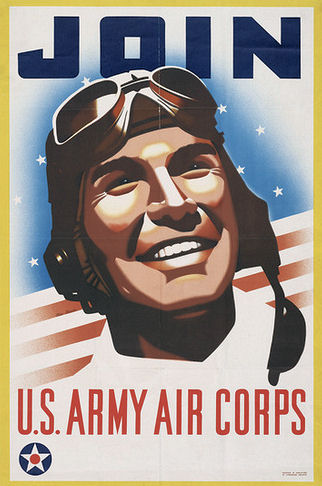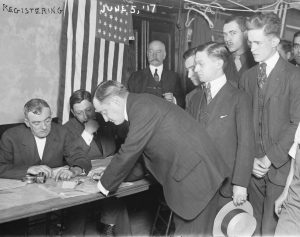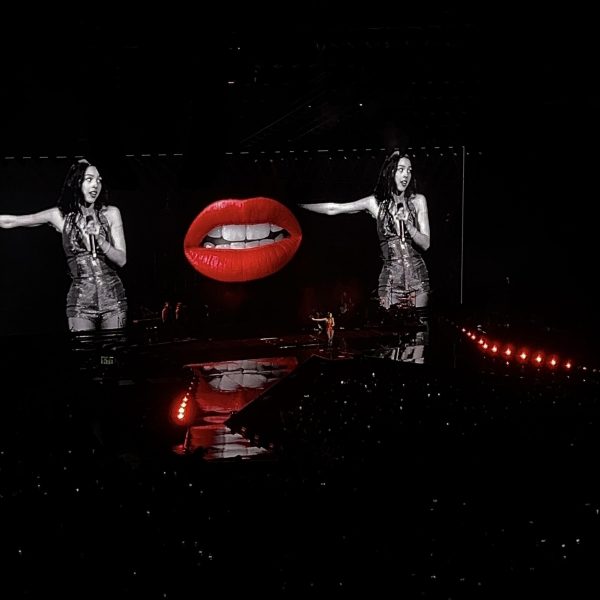The Draft: An Essential Tool

Photo provided by: United States Army Air Corps
Army Air Corp recruiting poster, 1941
February 26, 2020
With the recent tensions between the United States and Iran, many young people are concerned about the risks of war and a possible military draft upending the beginning of their adult lives. Concern about international conflict that involves the United States has sparked a debate about the draft and whether a modern state with an all-volunteer military should continue this practice. As flawed as it is, the draft is still an indispensable tool of modern government for the maintenance of national security.
Conscription, the practice of compulsory enlistment into military service, has been around since the beginning of violent conflict between humans. Known in the United States as the draft, military conscription ended in the United States in 1973 during the Vietnam War. It was replaced by the Selective Service System, which is designed to allow the draft to return if necessary. Almost all young men between the ages of 18 and 25 are mandated to register.
The draft is a strategic necessity. With 1,359,685 active duty service members as of Feb. 28, 2019, the United States has the third largest military by active personnel in the world, but our military is a larger percentage of our population than China and India, which possess the largest and second largest militaries in the world in regard to active service members, respectively. This means that in a war without the use of nuclear weapons, which would render traditional armed conflict irrelevant, the numbers advantage is strongly in favor of China, our most likely enemy of our two size competitors. The draft is a crucial tool to increase the size of a state’s military in time of conflict and would thus be necessary in any number of conflict scenarios to give the United States a greater chance of victory against an opponent. There is no suitable alternative to a draft system that would achieve the same goals in a strategically acceptable manner.
The draft allows the government and the people to protect themselves from aggression and threats to their freedom or values. There are not many people who volunteer to place their life on the line for their country, even in a time of peace, and in a time of war there are often even fewer. The draft allows for an equitable distribution of the costs of national security while guaranteeing its benefits for all.
I will concede, however, that the draft is a necessary evil. It is flawed, not in theory, but in execution. The requirement of Selective Service registration applies only to young men and not young women. And while it is generally true that men make better combat personnel than women, both are equally capable in support positions and many women are just as capable as men in combat service. This gender disparity is not a fault of the draft itself but rather a flaw in its implementation that is unbefitting of a supposedly egalitarian society.
Even if its implementation is flawed and war is terrible all around, the draft is an effective tool of government that allows the United States to protect its people and territory and ensure the security of our rights and freedoms from foreign aggression and those who wish to see the American way of life destroyed.
















